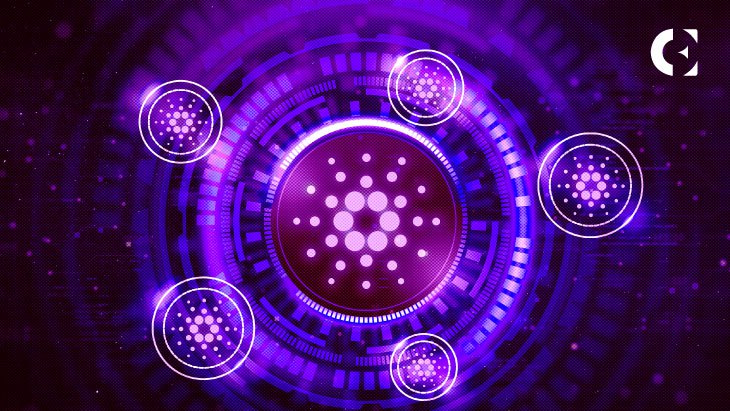- Cardano has issued over 8 million assets, with 1,900 active projects.
- The blockchain platform now supports 1.4 million delegated wallets.
- Hoskinson predicts AI and exponential technologies will shape the world by 2030.
Cardano, a prominent blockchain ecosystem, has unveiled its future plans amid the upcoming global challenges. Stepping into its seventh year on Friday, Charles Hoskinson, the CEO of Cardano, reflected on the platform’s progress and outlined its future goals.
Cardano’s Growth
In a talk show, Hoskinson stated that since its launch, Cardano has evolved into a comprehensive blockchain ecosystem. He pointed out key incidents, such as the Mary hard fork in 2021, which introduced native assets to the platform. It issued over 8 million assets, including 1,900 active projects that primarily focused on non-fungible tokens (NFTs).
Later that year, the Alonzo hard fork implemented smart contracts on Cardano. This fork facilitated the development of decentralized applications (dApps) and decentralized finance (DeFi) projects, and positioned Cardano at the forefront of blockchain technology.
Decentralized Governance Progress
Hoskinson emphasized the crucial role of decentralized governance in Cardano’s vision. He pointed out the success of the Catalyst program, which funded over 1,900 projects in the last five years and laid the foundation for Cardano’s governance system, Voltaire
Nearly 1.4 million delegated wallets and over 600 decentralized representatives (dReps) actively participated in decision-making. Further, Cardano’s treasury holds approximately 1.5 billion ADA, providing sustained funding for future projects and governance initiatives.
Outlook for 2030
Hoskinson shared his vision for the future and highlighted that artificial intelligence (AI) and exponential technologies will dominate in 2030. He expressed concerns about the rising mistrust in institutions and potential economic instability, noting that the U.S. national debt could exceed $50 trillion by the end of the decade, further straining its global economy.
Despite these challenges, Hoskinson believes that blockchain technology, particularly Cardano, offers solutions through decentralization and scalability. He emphasized that the platform’s ongoing development is focused on enhancing privacy, usability, and automated regulation.
Challenges in Blockchain Scalability and Usability
Although Cardano has robust support in the ecosystem, Hoskinson pointed out the challenges faced by the platform in blockchain technology, especially in scalability, affordability, and usability. He stated that all blockchains, including Cardano, were not able to meet the scaling needs of its users. It pinpointed that the costs associated with accessing and maintaining blockchain infrastructure remain significant hurdles and hinder adoption.
According to Hoskinson, a major obstacle is the complexity of public key cryptography, which has been a challenge since the 1990s, By making the technology accessible and user-friendly, the blockchain can enhance its adoption.
Further, it can overcome its challenges by enhancing features like enhanced privacy, automated regulation, and intuitive user interfaces. Hoskinson stressed that these goals are essential to improving the potential of blockchain as a global solution so that users can engage with the technology seamlessly while maintaining security and decentralization.
Disclaimer: The information presented in this article is for informational and educational purposes only. The article does not constitute financial advice or advice of any kind. Coin Edition is not responsible for any losses incurred as a result of the utilization of content, products, or services mentioned. Readers are advised to exercise caution before taking any action related to the company.







